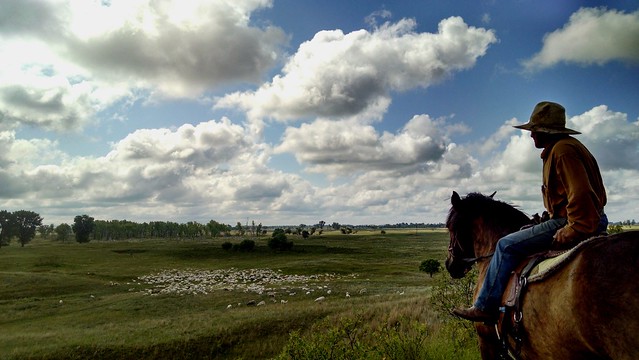
Domestic livestock have been grazing on western landscapes for centuries. The USDA Forest Service has worked alongside farmers and ranchers to manage those landscapes, which were rapidly degrading from overuse by the time the agency was formed in 1905.
Forest Service land managers and western livestock operators have worked together over the years to improve these rangeland ecosystems. They pooled resources, knowledge, and instituted science-based management practices for sustainable livestock grazing and rangeland management.

This relationship between the Forest Service and ranching families have led to one of the nation’s greatest conservation success stories. Today, the 95 million acres of rangelands and grazed forest lands are much more vibrant and productive.
The Forest Service permits and administers grazing across 29 states. These permitted grazing areas continue to provide a vital source of forage for domestic livestock and support rural communities and ranching operations. Recognizing the importance of a strong working relationship between land managers and ranchers, the Secretary of Agriculture issued a memo directing the Forest Service to honor our nation’s grazing heritage (PDF, 268 KB) in June of this year.
Many ranchers rely on the sustainably managed forage found on public lands managed by the Forest Service and other agencies, to sustain their livelihoods. In turn, their livestock provide critical ecological benefits to the landscape. Domestic livestock graze on plant species that evolved with grazing herbivores, and like their wild counterparts, they supply nutrients to the soil as they graze. Ranches also help to preserve open space and intact landscapes, supporting wildlife habitat, clean water and recreation opportunities.
The benefits extend beyond the ecological. The economic activity generated from ranching is the lifeblood of many rural communities. By supporting ranchers who hold grazing permits, the Forest Service is helping to revitalize and strengthen rural economies. Ranching also bolsters America’s food security, providing a critical link in the supply chain of protein that feeds America and the world.
The relationship between ranchers and the Forest Service benefits all Americans. It supports thousands of jobs, contributes hundreds of millions of dollars to the economy, produces food and ensures sustainable land management.
Though many things have changed over time, livestock grazing remains one of the many important uses of our nation’s forests and grasslands. The Forest Service remains committed to strengthening relationships with ranching families to deliver on its multiple use mission, as it has for more than 100 years.
To learn more about rangeland and ranching on national forests and grasslands, visit www.fs.fed.us/rangeland-management.

